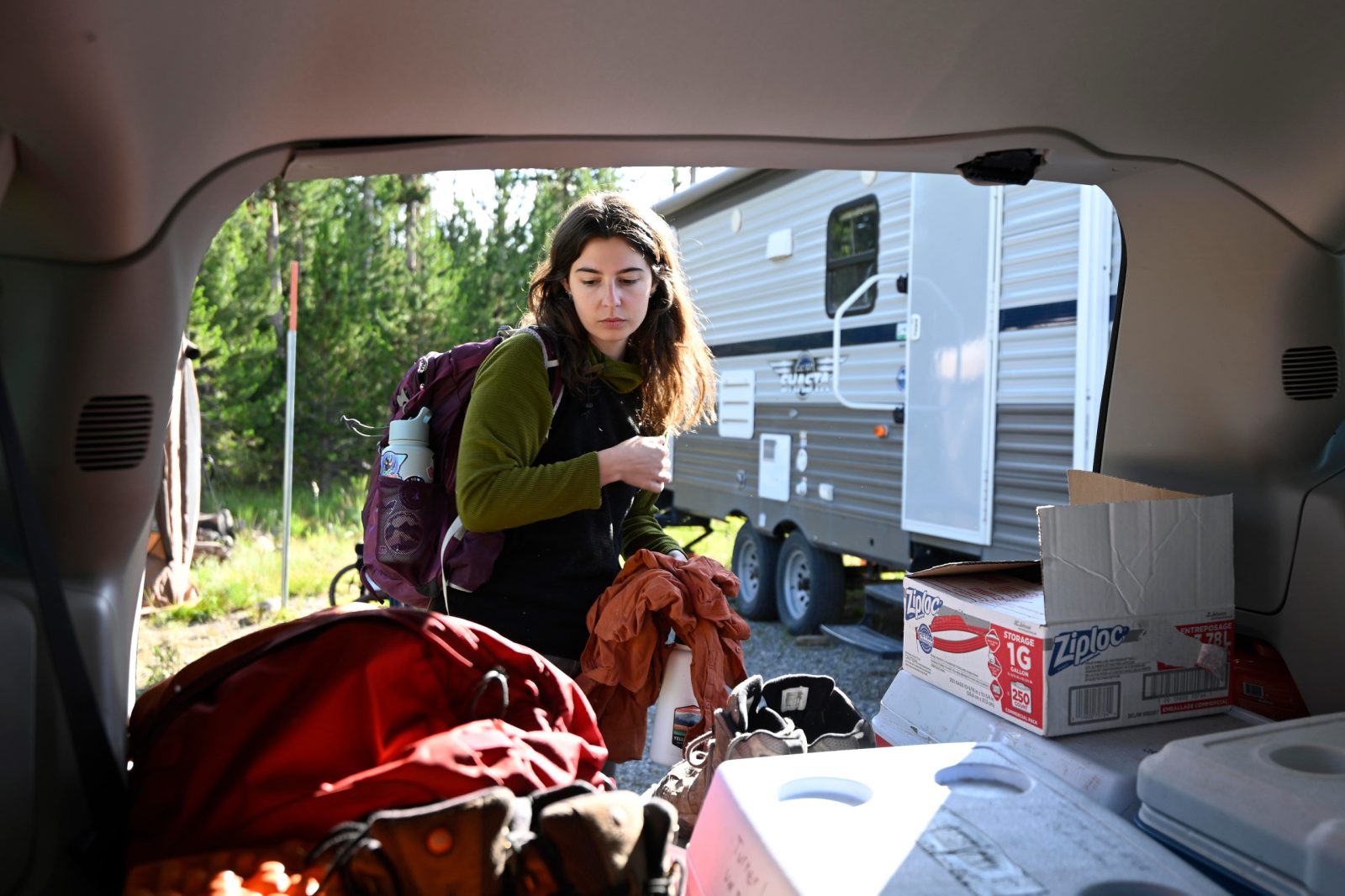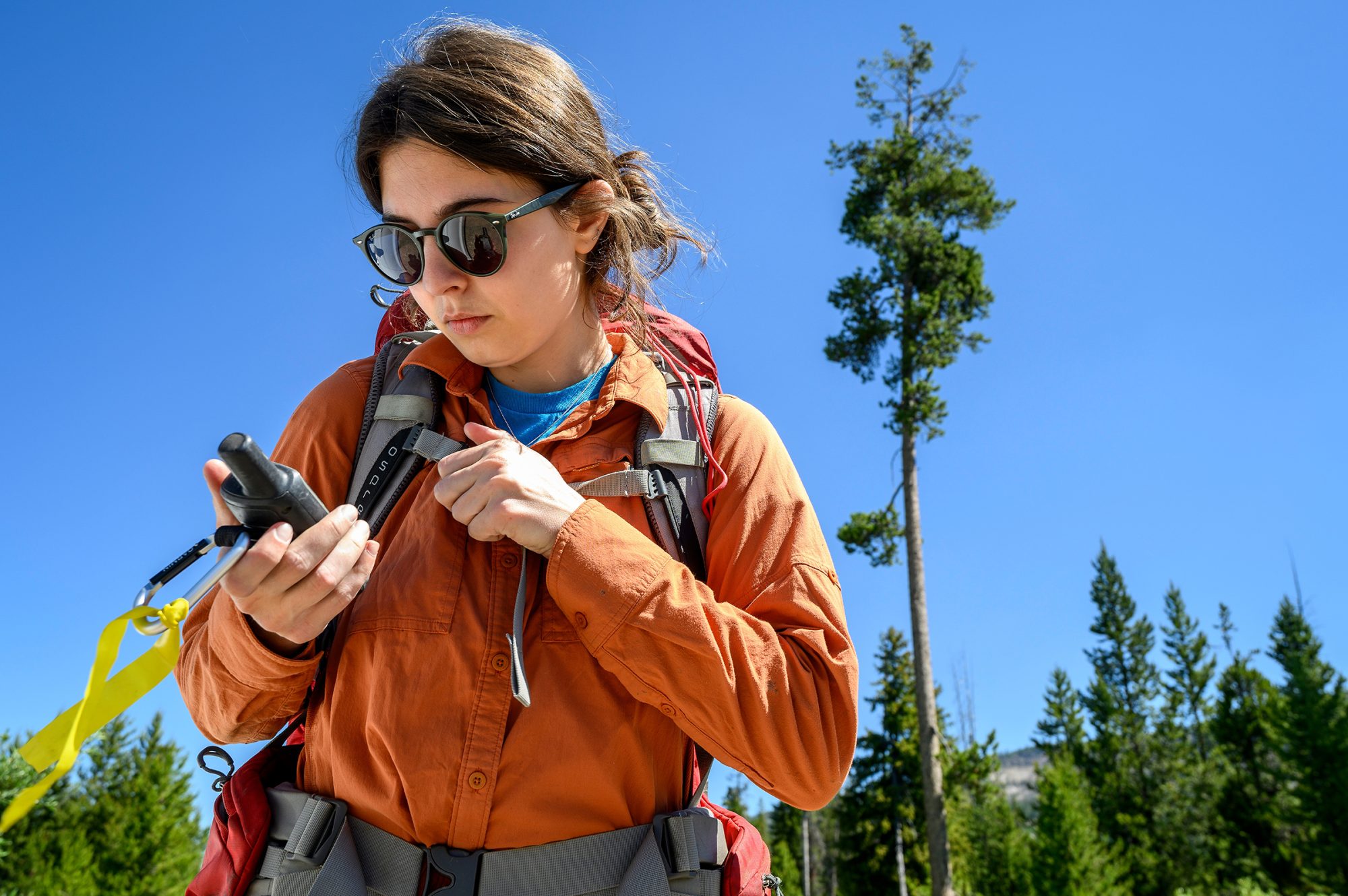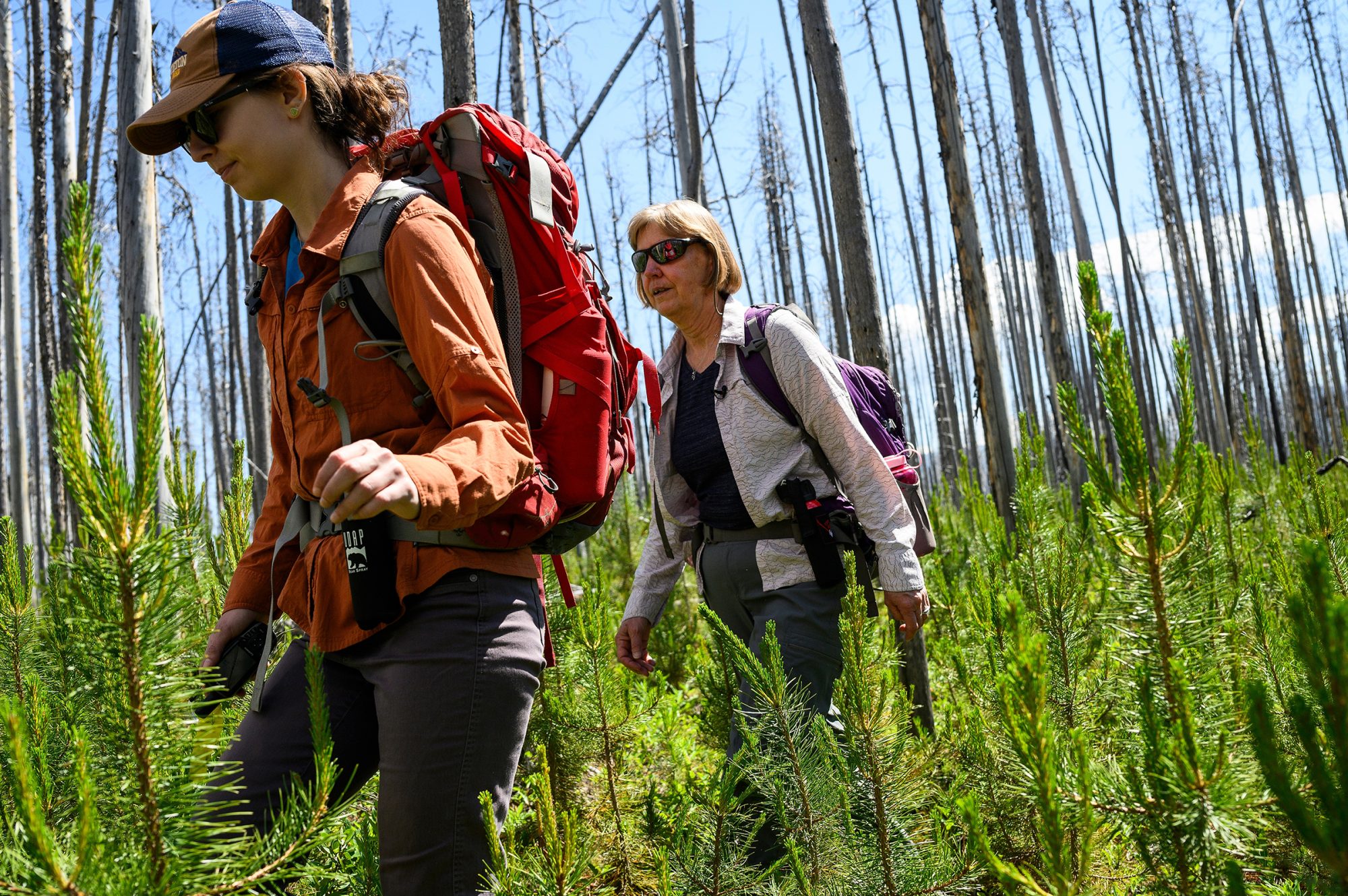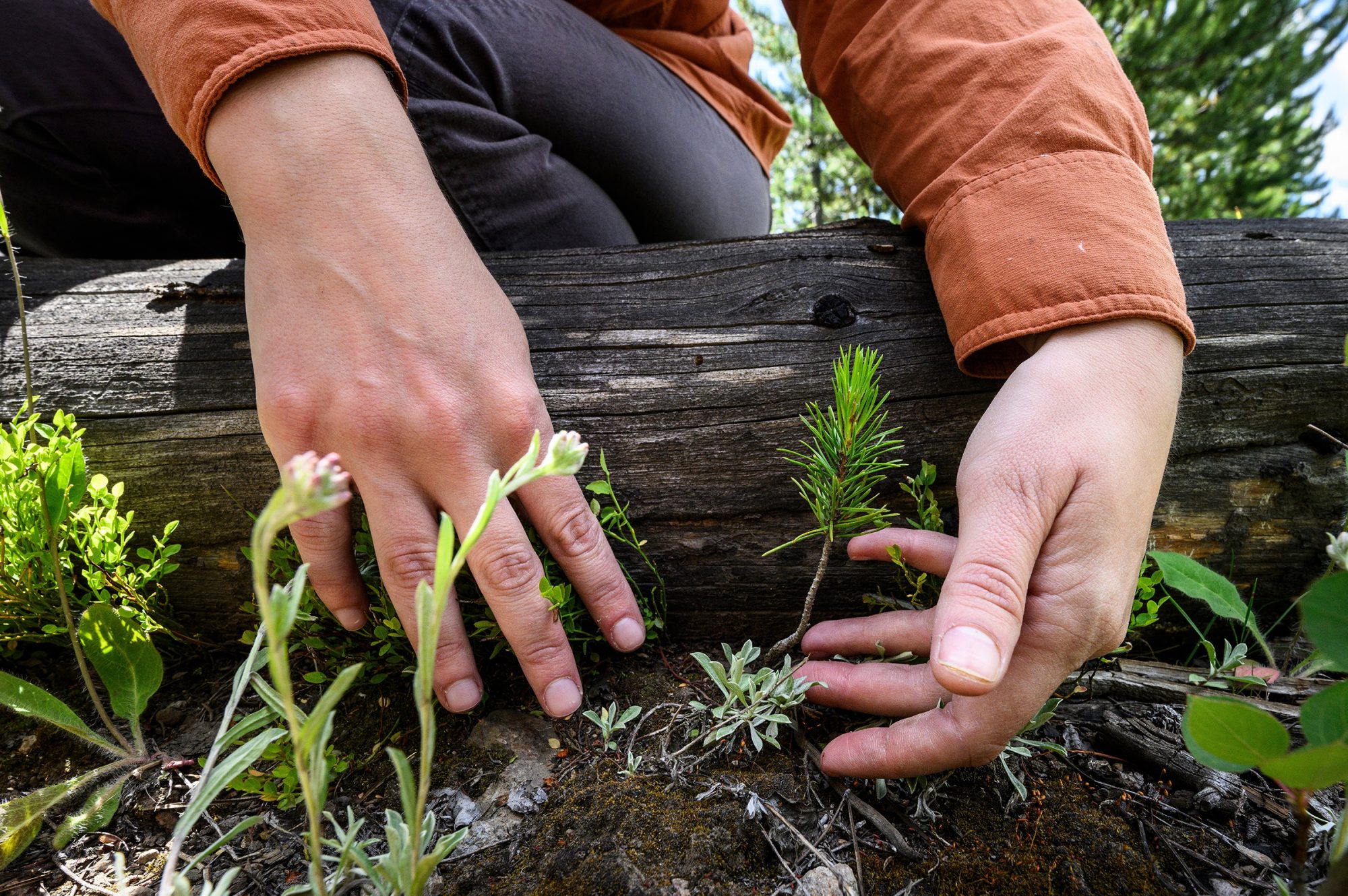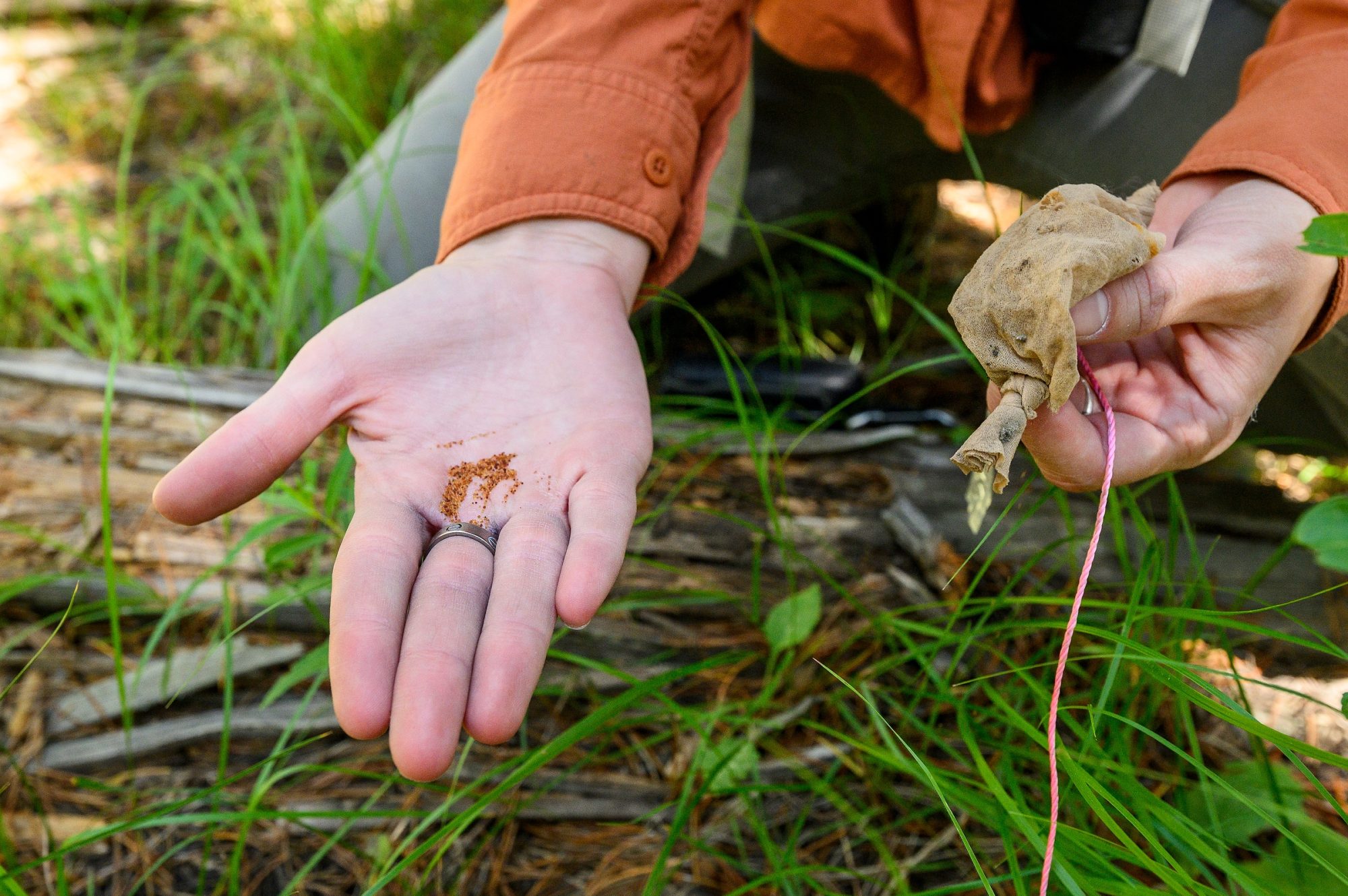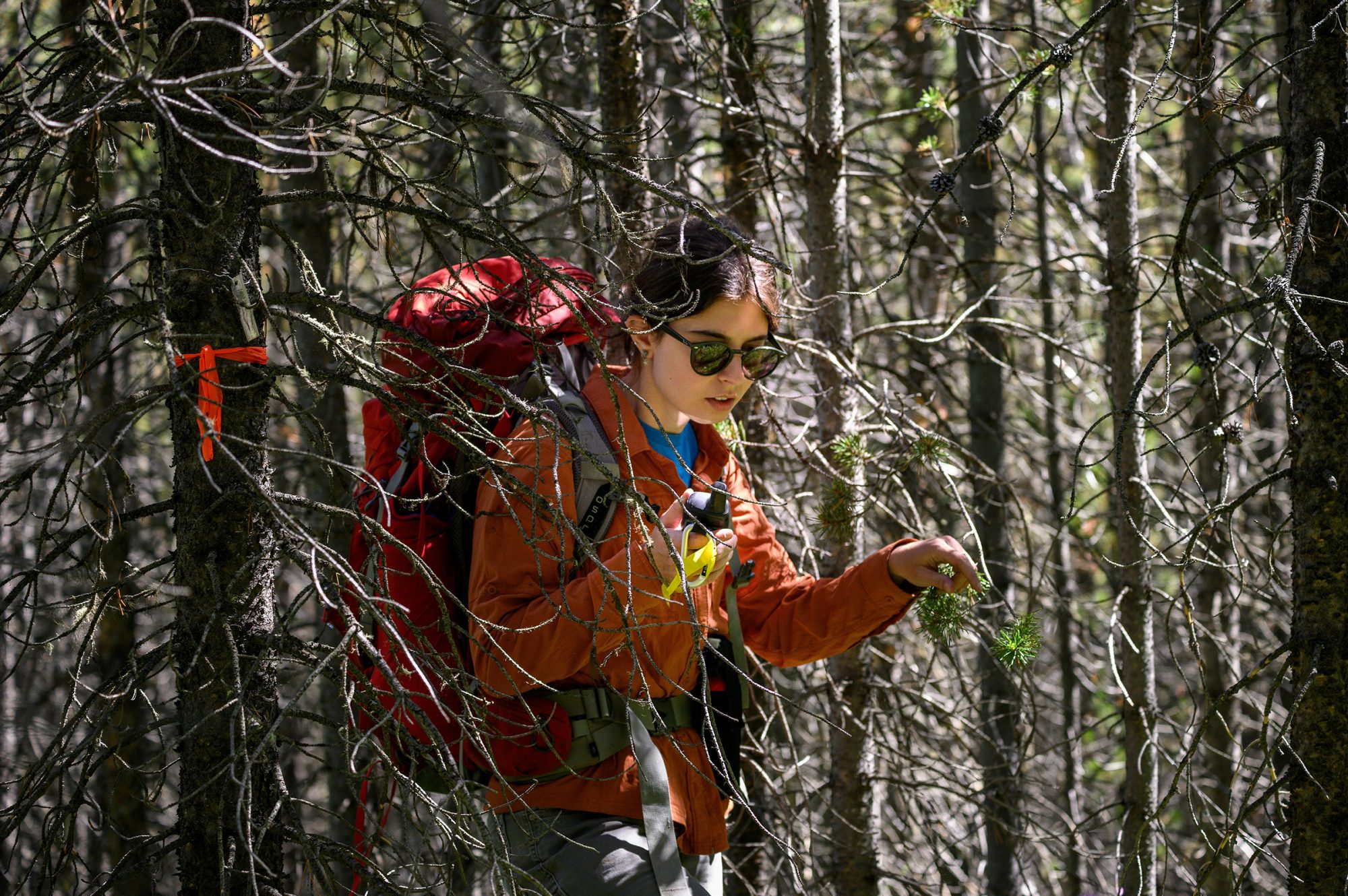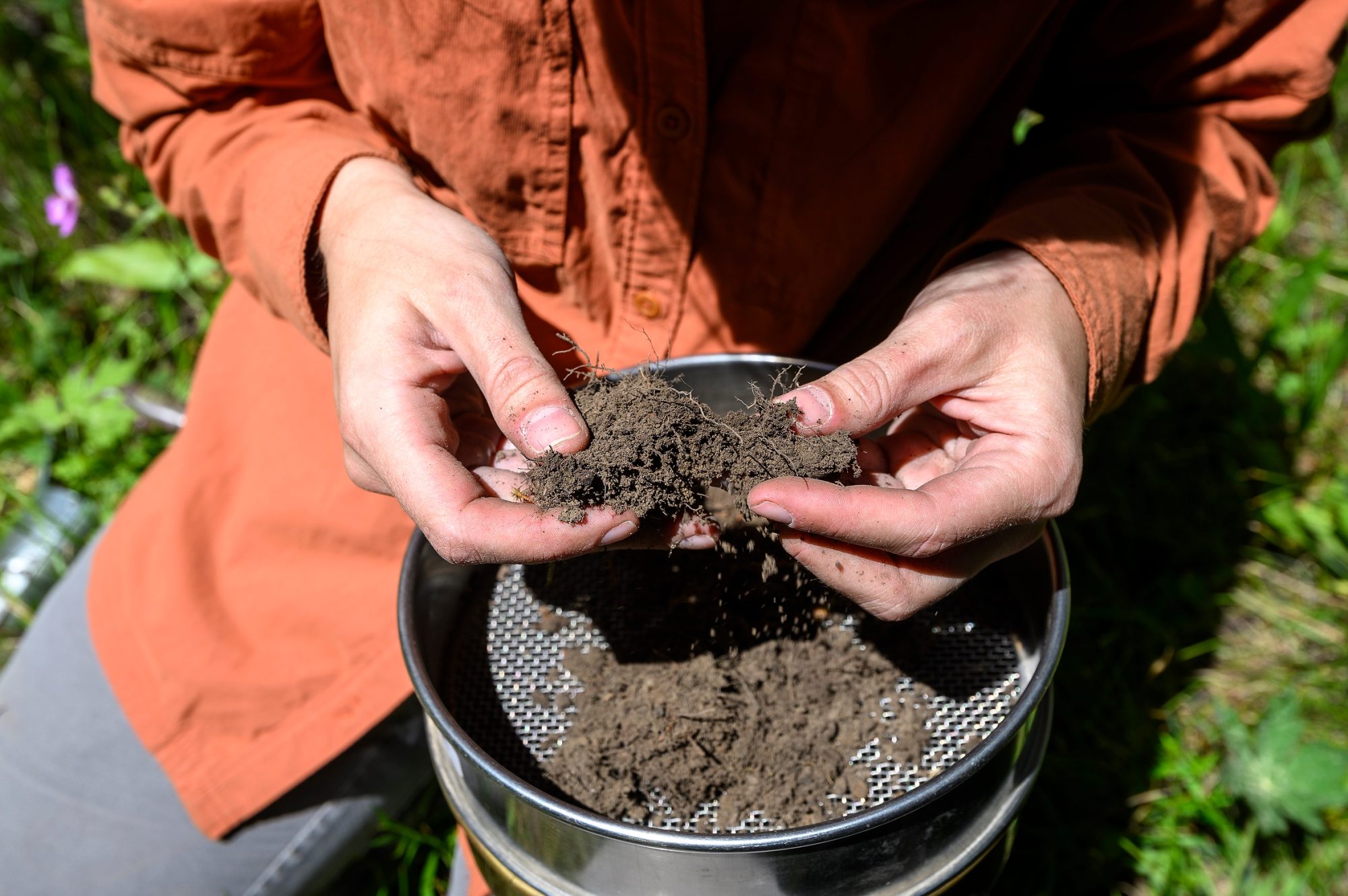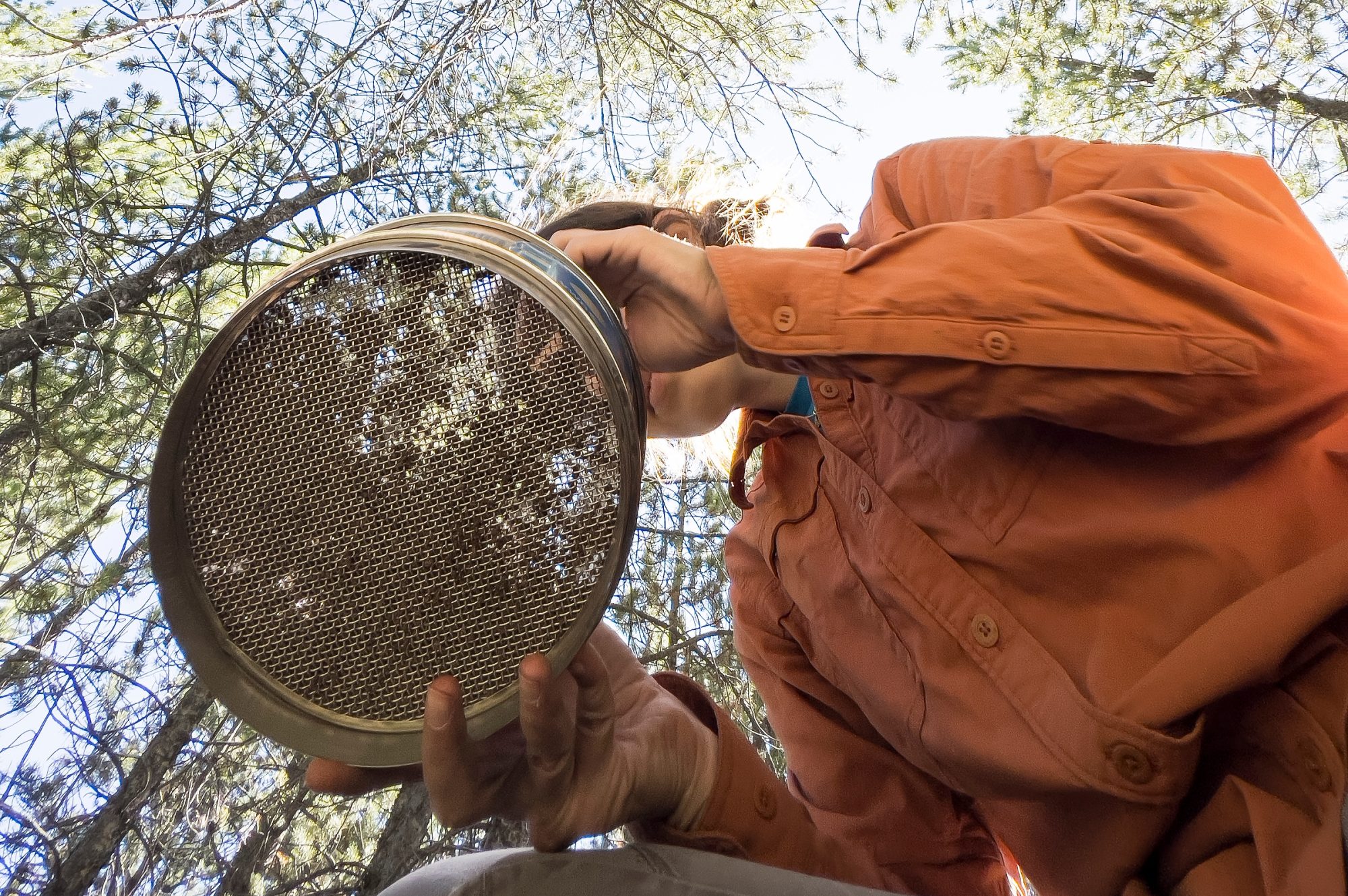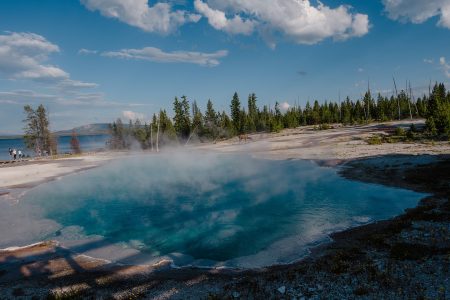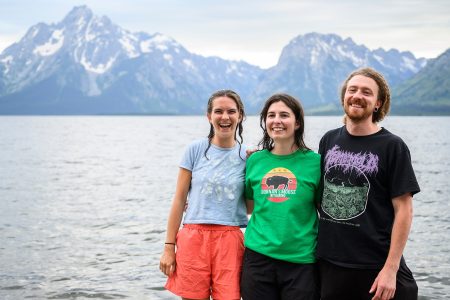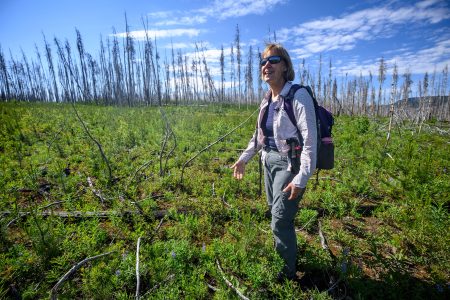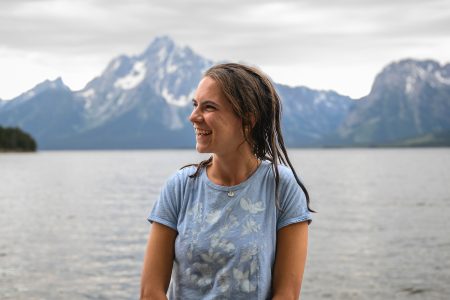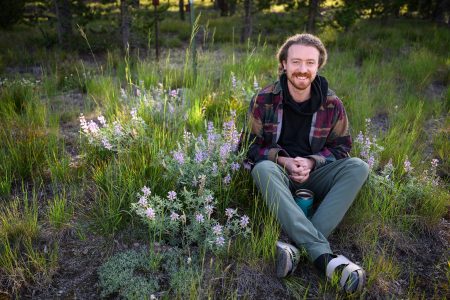Before the team left Madison for Yellowstone, they programmed GPS units with the exact locations of the study sites they need to visit. The devices help Arielle and the rest of the team navigate in thick forest, where wayfinding is not as straightforward as following a trail.
As Arielle makes her way through the forest in search of a study site, she calls out, “Hey, bear!” frequently to make sure not to startle the bears, moose and elk that make this their home.
Before the team left Madison for Yellowstone, they programmed GPS units with the exact locations of the study sites they need to visit. The devices help Arielle and the rest of the team navigate in thick forest, where wayfinding is not as straightforward as following a trail. As Arielle makes her way through the forest in search of a study site, she calls out, “Hey, bear!” frequently to make sure not to startle the bears, moose and elk that make this their home.
Arielle and Turner, a professor of ecology and conservation biology, pick their way through a green sea of young lodgepole pines; the burnt and blackened trunks of the previous generation rise behind. They’re moving through a recovering section of forest that burned in the 2016 Berry Fire.
Tucked in the shelter of a burnt tree trunk, a baby lodgepole pine grows toward the light. To understand how forests within the study sites are recovering after fire, the team regularly returns to these specific areas of the forests, counting new seedlings and measuring their growth.
Arielle has become adept at finding these tiny seedlings — even when they are only identifiable by a few needles poking out of the scorched ground.
Tucked in the shelter of a burnt tree trunk, a baby lodgepole pine grows toward the light. To understand how forests within the study sites are recovering after fire, the team regularly returns to these specific areas of the forests, counting new seedlings and measuring their growth. Arielle has become adept at finding these tiny seedlings — even when they are only identifiable by a few needles poking out of the scorched ground.
Once they reach their destination, Arielle downloads data onto her laptop from sensors in a plastic tub tucked between young trees. Through the long months of winter and the increasingly warm summers, the instruments have been measuring soil temperature and moisture levels every hour. Once back in Madison, Arielle will use the data to answer questions about the relationship between soil conditions and forest regrowth following a burn.
A few hundred feet away is a section of forest on a hillside that was recovering from the park’s historic 1988 fires when the Berry Fire blazed through in 2016. The landscape and plant species are recovering differently in this twice-burned area compared to areas that only burned once, making this an important location for comparing forest recovery from short- and long-interval burns. Fires are a natural feature of the forests of Yellowstone, but historically have burned hundreds of years, rather than decades, apart.
Once they reach their destination, Arielle downloads data onto her laptop from sensors in a plastic tub tucked between young trees. Through the long months of winter and the increasingly warm summers, the instruments have been measuring soil temperature and moisture levels every hour. Once back in Madison, Arielle will use the data to answer questions about the relationship between soil conditions and forest regrowth following a burn. A few hundred feet away is a section of forest on a hillside that was recovering from the park’s historic 1988 fires when the Berry Fire blazed through in 2016. The landscape and plant species are recovering differently in this twice-burned area compared to areas that only burned once, making this an important location for comparing forest recovery from short- and long-interval burns. Fires are a natural feature of the forests of Yellowstone, but historically have burned hundreds of years, rather than decades, apart.
The lab also uses bags filled with tiny beads of amber-colored synthetic resin to measure the amount of nutrients, like nitrogen, in the soil which is vital for plant growth. One way scientists approach a complicated ecosystem is to ask very specific questions. In this case, they want to know: “Does the amount of nitrogen in the soil after a fire limit how quickly a forest regrows?”
In addition to helping with the long-term forest resilience studies, Arielle is also asking her own scientific questions. Figuring out the right approach to designing a project and collecting data that will help answer those questions can be overwhelming, not unlike trying to pass through a stand of lodgepole pine that is, at times, so dense that you can barely see the person a few feet in front of you. Luckily, with the help of labmates, Turner and other UW–Madison faculty, it's not something anyone in the Turner lab has to navigate alone.
In a collaboration between Turner lab’s and UW Professor of Soil Ecology Thea Whitman, one aspect of Arielle’s PhD research involves studying the relationship between lodgepole pines and the wispy threads of fungi that can be found at their root tips. Fungi and plant roots can form a symbiotic relationship where the fungi help extend the reach of roots so they can absorb more nutrients from soil. In lodgepole pines, Arielle hopes to better understand the role of fungi in a forest’s recovery after fire.
Scientists like Arielle are curious about how things work. They ask focused questions to understand the small processes that contribute to the function of complex systems. Over time, scientists work together to sift through their findings (and sometimes the soil) to winnow out a better understanding of how ecosystems work.
